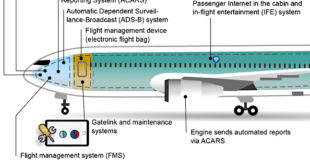On March 28, the U.S. Department of Defense (DoD) released its Defense Industrial Base Cybersecurity Strategy, aimed at addressing the evolving cyber threats faced by the defense sector while expanding collaboration between the public and private sectors. The strategy highlights the critical need for robust cybersecurity measures in light of the myriad threats posed by foreign adversaries, including state-sponsored actors from countries like Russia, China, Iran, and North Korea, as well as nonstate entities such as violent extremist organizations and transnational criminal groups. This strategy emphasizes the need for robust public-private collaboration to safeguard critical infrastructure and sensitive information from increasingly sophisticated cyber adversaries.
The Evolving Cyber Threat Landscape
In today’s interconnected world, the defense industrial base (DIB) is increasingly vulnerable to cyber threats that can undermine national security. Cyberattacks can originate from various sources, including nation-state actors, criminal organizations, and hacktivists. The consequences of such attacks can be severe, impacting not only the defense sector but also the broader economy and public safety. The DoD’s new strategy acknowledges this reality and seeks to enhance the resilience of the DIB against these evolving threats.
David McKeown, Deputy Chief Information Officer for Cybersecurity and Chief Information Security Officer, emphasized the seriousness of these threats during a press briefing. He pointed to notable incidents, such as the Chinese acquisition of F-35 designs and Russia’s imitation of the space shuttle, as stark reminders of the “power of the hacker.” McKeown remarked, “Our data — the adversary is looking for it, and it really shortcuts their engineering and production time when they can just steal it from us and not have to sit down and do real engineering on their own. So, hopefully, everybody understands that this is a real threat.”
Key Objectives of the Cybersecurity Strategy
The strategy outlines several key objectives aimed at fortifying cybersecurity within the defense industrial base.
The strategy emphasizes that safeguarding the information environments of Defense Industrial Base (DIB) contractors is as crucial as protecting those of the Department of Defense (DoD) itself. To achieve this, it sets forth four primary goals to be pursued from fiscal years 2024 through 2027. First, the strategy aims to strengthen governance by enhancing the DoD’s governance structure for DIB cybersecurity. This improvement will create a more robust framework for overseeing and coordinating cybersecurity efforts across the defense sector.
Second, the strategy seeks to enhance the overall cybersecurity posture of the DIB, ensuring that defense contractors are better equipped to defend against emerging threats. This goal involves implementing comprehensive measures that elevate the security standards across the board, creating a more resilient defense network.
The third goal focuses on preserving resilience within critical DIB capabilities, particularly in a cyber-contested environment. This involves ensuring that essential functions can withstand and recover from cyber incidents, thereby maintaining the operational integrity of the defense infrastructure. Finally, the strategy aims to improve collaboration with DIB stakeholders, fostering stronger partnerships and facilitating information sharing among government and industry players.
To further fortify cybersecurity within the defense industrial base, the strategy outlines several key objectives. One major focus is on enhancing threat awareness and intelligence sharing. The strategy highlights the importance of real-time threat intelligence and collaborative information sharing between government entities and the private sector. By fostering a culture of cooperation, the DoD aims to ensure that industry partners remain informed about the latest cyber threats and vulnerabilities, enabling them to take proactive measures to defend against potential attacks.
Additionally, the strategy calls for strengthening cybersecurity standards that align with national security objectives. This includes the implementation of the Cybersecurity Maturity Model Certification (CMMC), which requires defense contractors to meet specific cybersecurity requirements to be eligible for government contracts. By establishing rigorous standards, the DoD aims to create a baseline level of security that all contractors must adhere to.
Recognizing that no system can be completely immune to cyberattacks, the strategy also prioritizes promoting cyber resilience. This includes the development of capabilities that allow organizations to withstand, respond to, and recover from cyber incidents. Investing in advanced technologies and practices is essential to maintaining operational continuity during and after an attack, thus ensuring that the defense infrastructure remains functional even in the face of adversity.
Lastly, a critical component of the strategy is the emphasis on expanding workforce development within the DIB. The DoD recognizes the need for a skilled cybersecurity workforce to effectively combat cyber threats. By investing in training and education programs, the strategy aims to equip employees with the knowledge and skills necessary to navigate the complex cybersecurity landscape and safeguard the defense industrial base against evolving threats.
Public-Private Collaboration: A Cornerstone of Success
The Path Forward
As the defense industrial base continues to face evolving cyber threats, the release of the Defense Industrial Base Cybersecurity Strategy represents a proactive step towards safeguarding national security. By enhancing threat awareness, strengthening standards, promoting resilience, and fostering collaboration, the DoD aims to build a more secure and resilient defense sector.
However, the continuously evolving threat landscape necessitates ongoing adaptation and innovation. By prioritizing cybersecurity, investing in advanced technologies, and fostering collaboration across sectors, the U.S. can reinforce its defense capabilities and secure its national security in the face of emerging cyber threats.
In this pivotal era, the collective responsibility of enhancing cybersecurity falls not only on the DoD but also on industry stakeholders and government partners. As cyber threats become increasingly complex and pervasive, a united front will be essential for protecting the nation’s critical defense infrastructure and ensuring the integrity of our defense operations. Through unified efforts and a commitment to innovation, we can create a resilient defense industrial base prepared to withstand the challenges of the digital age.
 International Defense Security & Technology Your trusted Source for News, Research and Analysis
International Defense Security & Technology Your trusted Source for News, Research and Analysis
